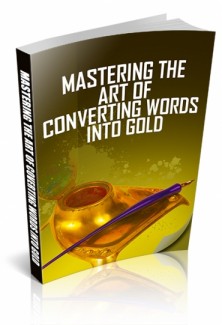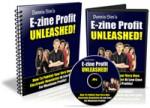 License Type: Master Resell Rights
License Type: Master Resell Rights  File Size: 1,686 KB
File Size: 1,686 KB File Type: ZIP
File Type: ZIP
 SKU: 54520
SKU: 54520  Shipping: Online Download
Shipping: Online Download
Ebook Sample Content Preview:
Chapter 5: Presenting The Offer
Synopsis
The way you put together your offer makes or breaks your product launch, so you have to make it irresistible. A well put together offer will make your customers excited about what they're receiving, thrilled with the pricing, and hungry to purchase what you're marketing.
In this part of the series, we're going to demonstrate how to make that occur.
If your offer isn't potent enough to simply convert readers into purchasers, you have an issue.
This will help you make your offer more likeable and "must-have," so that your customers view it as a chance to purchase something that they don't wish to miss.
Your offer isn't simply a little description of the product or service you're marketing - it's the sum of everything they get (the stuff) and the way that the sum package is delivered to them (payment plans, data formatting, guarantees, and so forth.). And the way you present everything.
Most individuals simply say "Hey, here's my stuff, would you like to purchase it?" and wonder why they're not bringing in the sales they had anticipated. What they have to do (and what you likely need to do as well) is get incredibly adept at communicating just how great your offer is.
Chances are this isn't news to you, but if it is, here's the general breakdown of a great offer:
The thing they're purchasing. This may be a product, service or experience ... but it's the core matter that gets their attention.
Extra bonuses. It's always a great idea to pack some bonuses into your offer to make it more likeable.
Any relevant up-sells. There's forever a great chance your buyers may be interested in picking up additional relevant products/services during their buy.
The data format you're delivering everything in. Audio, video, live events, downloads, tangible products ... the works.
The structure of the buy. This may mean payment plans, payment sorts accepted, and so forth.
The guarantee you're presenting them. Make it a great one. :-)
The conditions of the offer. These are constraints like limited time, 3 per buyer, and so forth.
There may be more in an offer if you wish to make it more complicated, but this is the general framework that a typical offer holds. Now let's discuss a few easy tweaks that will make your next offer much more likeable to likely buyers.
Each offer requires a reason behind it as it builds some story into the offer, which helps them comprehend more about what they're receiving as well as legitimizes the offer in the first place. It no longer becomes an "aggressive sale" but instead something that's there for a purpose.
It may be something as simple as a holiday sale - naturally the prices are falling, it's shopping season. Or it may be the opposite, as you see in pre-launch pricing - you are able to get it at a discount if you purchase it before it formally hits the marketplace.
In offers where scarceness is at play, you might see more things as in a tangible product where the first batch is at a lower cost than it will be sold later merely because the seller wants individuals to purchase it fast and get the word out. Passing on the reasoning behind the offer takes the customers' shields down a bit as they see a reason for the deal that adds up to them - and they're comfortably involved in a story. And each little way you make them feel easier brings you closer to the sale.
And bear in mind that the reasoning doesn't have to be founded on discount pricing. You are able to have a purpose for a higher price, also - particularly if your offer involves a short-notice or rush transaction.
If your target market tends to get tense considering pricing (as in, "Geez! That's a lot!"), then it's time to utilize a technique called "normalizing" to make them get more used to the notion of purchasing your stuff.
You don't want individuals to see a big number and get sticker shock, as they immediately raise the protest that they can't pay that much, or that a dealing of that size is unthinkable. (Curiously enough, you don't have to have a high price for this - a few individuals balk even at spending $10.)
However the real issue here isn't that they can't see themselves dropping the cash - they simply can't see themselves spending the cash with you.
So you've got to make them view their spending habits to remind them that yep, they spend cash all the time.
The easiest way to do this is to equate the purchase to something they're already spending cash on. Consider all the offers you've seen in the past that accomplish this:
"For less than the cost of a cup of coffee a day, you are able to support a youngster in (insert country here)"
This $299 all-in-one shopping system substitutes the 3 systems you're already paying $400+ for"
"For the cost of one dinner out a month, you are able to get (insert product here)"
"For the cost of 10 minutes of consulting with me, you receive a 112-page crash program in how to sell your ebooks ..."
The bottom line here is if you are able to compare the buy you want them to make with buys they're already making, then the resistance to purchasing goes way down. So view other offers you see on a day-to-day basis and be aware of how they're normalizing the buy for you - you'll learn a great deal.
Another basic objection to buying is that the price is too elevated (but you are able to defeat a lot of that by learning to compose a sales page that's designed for high-conversion). Luckily, you can utilize price positioning to defuse this protest.
If you break the sum purchase down into payments, like the 3-pay, 6-pay or 12-pay choices you see out there. This is a simple way to handle 2 distinguishable objections:
"I couldn't possibly pay that today." - If you're marketing a $2,000 package, not everybody has that. Breaking it down to, suppose, four payments of $250 may get a lot of customers to jump on board.
"It costs a bit much." - If you were to break a $500 product into twelve payments of $50, it no longer looks like a $500 product. It looks like a $50 one - and that's a big psychological difference.
- File Size:1,686 KB
- License: Master Resell Rights
- Category:Ebooks
- Tags:2014 Ebooks Master Resale Rights








